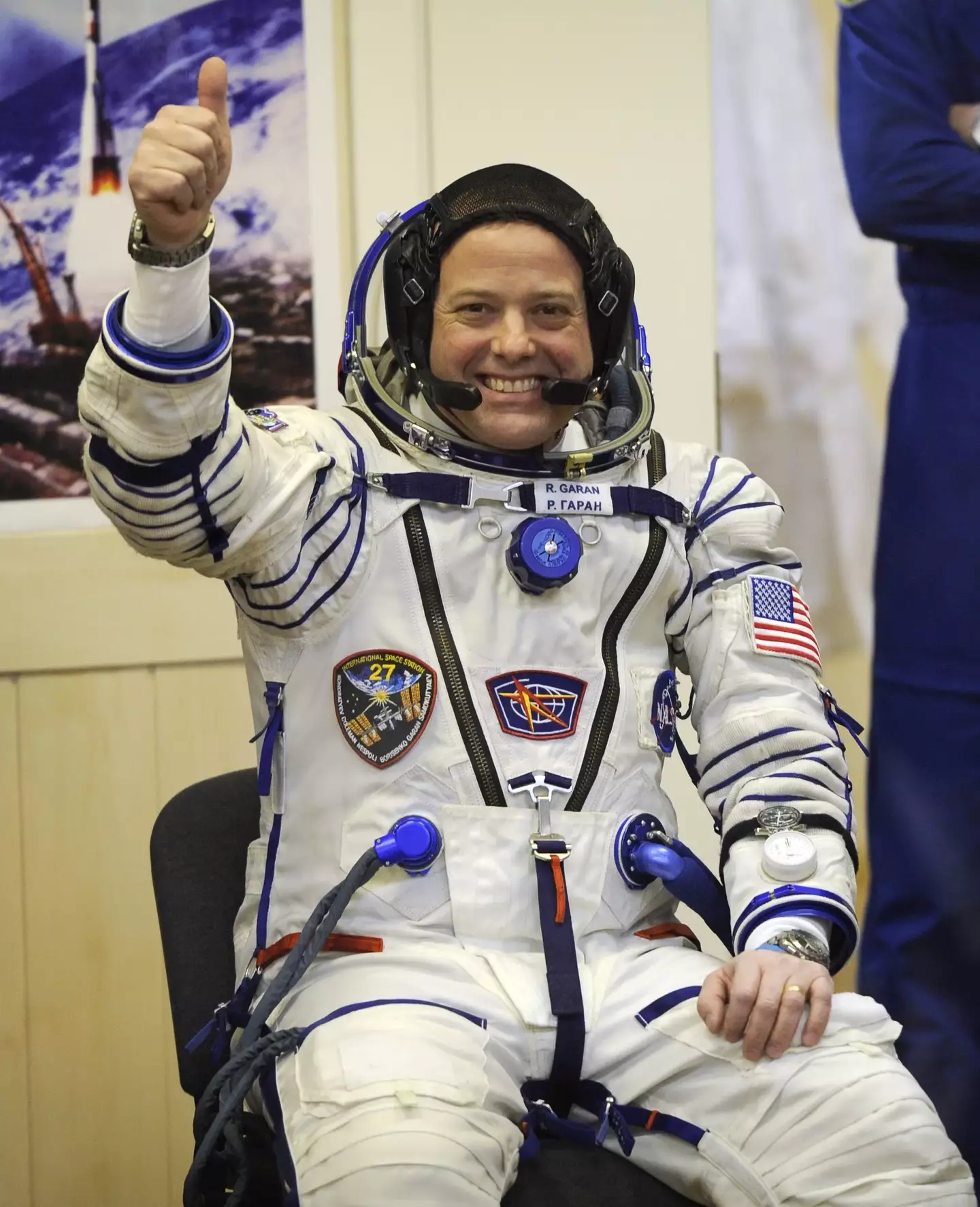
Former NASA cadet Ronald Garan (Carla Cioffi/NASA via Getty Images)
His first mission was in 2008 when he flew to the International Space Station (ISS), returning again in 2011 for a five-month stay.
It goes without saying that Ronald felt the ‘overview effect’ more than once, which is the ‘unexpected and overwhelming emotion’ astronauts have when looking down at Earth from space.
In a 2022 interview with Big Think, Ronald said: “When I looked out the window of the International Space Station, I saw the paparazzi-like flashes of lightning storms, I saw dancing curtains of auroras that seemed so close it was as if we could reach out and touch them.
“And I saw the unbelievable thinness of our planet’s atmosphere.”
In that moment he was suddenly ‘hit with the sobering realisation that that paper-thin layer keeps every living thing on our planet alive’.
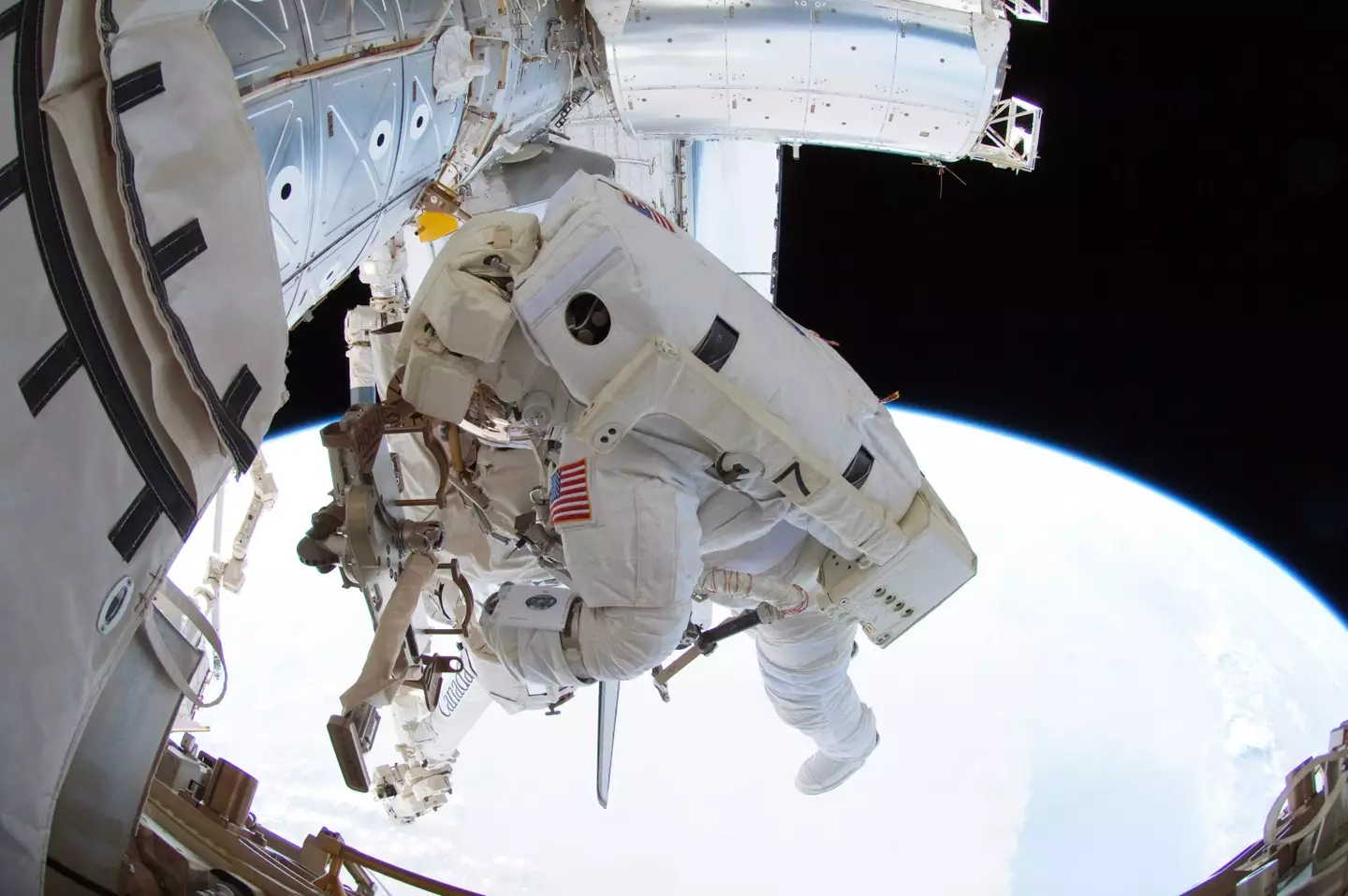
Ronald had a realisation in space (NASA via Getty Images)
The former astronaut added: “I saw an iridescent biosphere teeming with life.
“I didn’t see the economy. But since our human-made systems treat everything, including the very life-support systems of our planet, as the wholly owned subsidiary of the global economy, it’s obvious from the vantage point of space that we’re living a lie.
“We need to move from thinking economy, society, planet to planet, society, economy. That’s when we’re going to continue our evolutionary process.
“There’s this light bulb that pops up where they realise how interconnected and interdependent we all are.
“A little over 50 years ago, humanity as a whole had a collective out-of-body experience.
“On Christmas Eve, 1968, the crew of Apollo 8 came out from behind the far side of the moon on their fourth orbit.
“They took a famous colour photograph, and that photo is called ‘Earthrise’.
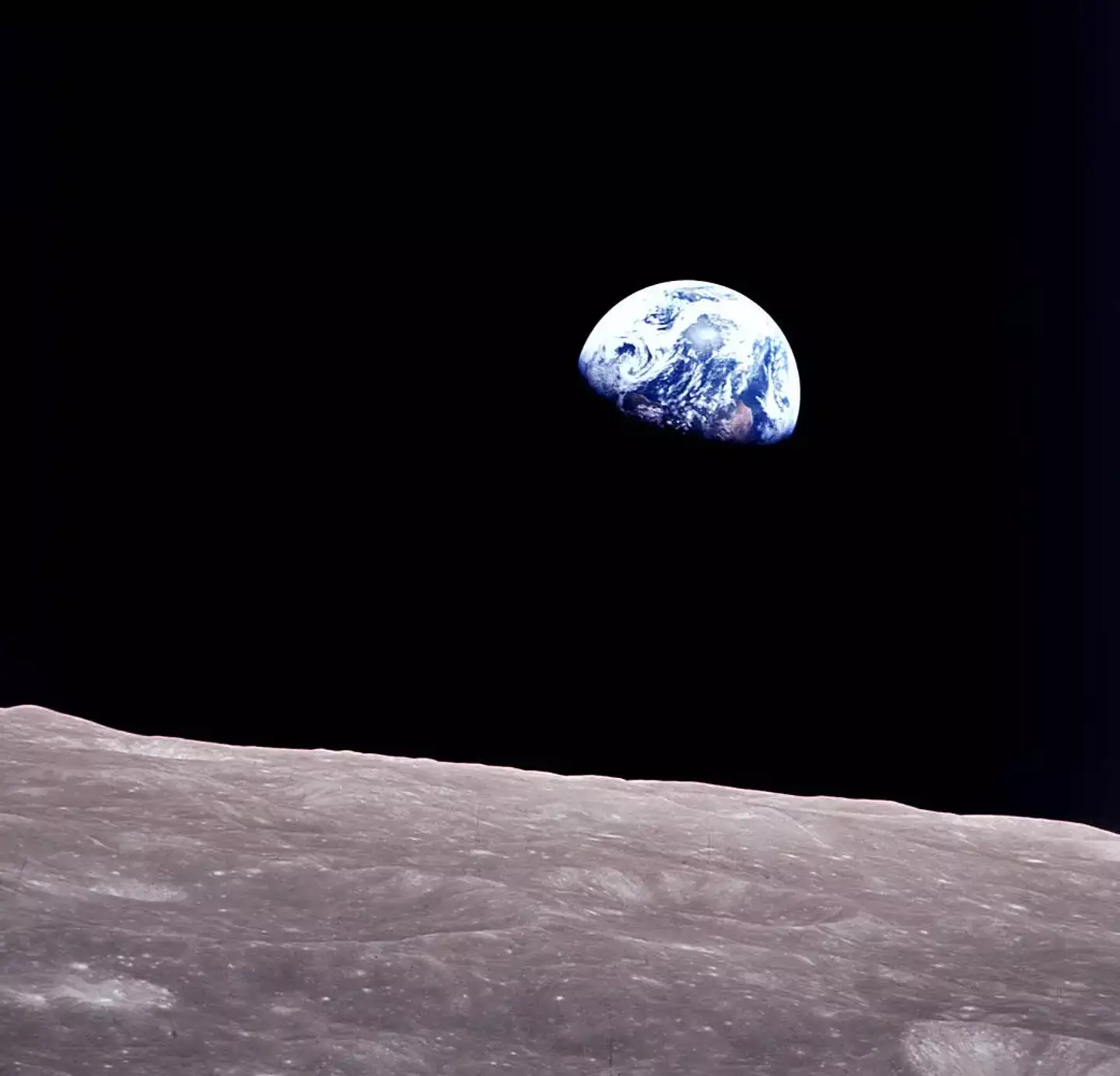
Earthrise (NASA)
“Earthrise is the first colour photograph to see the whole planet hanging in the blackness of space, and the first to capture that for the rest of us, and this image revolutionised how we see the world, how we see ourselves.
“There is no such thing as them. There’s only us.”
Featured Image Credit: Carla Cioffi/NASA via Getty Images/NASA via Getty Images

You can only imagine what sort of things are hurtling through an astronaut’s head while they’ve got a birds eye view of our planet from space – but I reckon ‘that’s a long way down’ might be a leading contender.
But for former NASA space cadet Ron Garan, 62, there was only one thing on his mind…the ‘sobering realisation’ that us Earthlings are ‘living a lie’.
And no, it’s not that the Flat Earth brigade were right all along. In fact, it’s something much more compelling.
Just put yourself in Garan’s spacesuit for a second and imagine what he was thinking while he had an uninterrupted view of our globe and experienced what’s known as the ‘overview effect’.
For those who don’t know, this term described the cognitive shift that a lot of astronauts feel when taking a look at Earth while floating in space – which researchers compare to a ‘state of awe with self-transcendent qualities’.
This phenomena may trigger an ‘unexpected and overwhelming emotion’ for those who are brave enough to clamour onboard a rocket, which to be honest, shouldn’t be that surprising.
I mean, they’re seeing something which only a mere few mortals will ever get too – I’m pretty sure I’d be in my feels too.
That’s exactly the experience Garan had while spending 178 days in space, travelling more than 71 million miles in 2,842 orbits throughout his career at NASA.
With the unique perspective on the world he got from his time on the International Space Station (ISS), he drew some very interesting conclusions about our way of life while looking out of the window.
Speaking to the Big Think, the New Yorker said that he realised the things that most humans are worried about aren’t a big deal after all – but we should be a lot more concerned about global warming, deforestation and biodiversity loss.

NASA astronaut Ron Garan had quite the awakening while up in space (ALEXANDER NEMENOV/AFP via Getty Images)
Discussing what he witnessed, Garan explained: “When I looked out the window of the International Space Station, I saw the paparazzi-like flashes of lightning storms, I saw dancing curtains of auroras that seemed so close it was as if we could reach out and touch them.
“And I saw the unbelievable thinness of our planet’s atmosphere. In that moment, I was hit with the sobering realisation that that paper-thin layer keeps every living thing on our planet alive.
“I saw an iridescent biosphere teeming with life. I didn’t see the economy. But since our human-made systems treat everything, including the very life-support systems of our planet, as the wholly owned subsidiary of the global economy, it’s obvious from the vantage point of space that we’re living a lie.”
It sounds like Elon Musk needs to get that SpaceX rocket sorted pronto so we can all have a look at this for ourselves.
“It’s obvious from the vantage point of space that we’re living a lie,” Garan continued. “We need to move from thinking economy, society, planet to planet, society, economy. That’s when we’re going to continue our evolutionary process.
“There’s this light bulb that pops up where they realise how interconnected and interdependent we all are.”
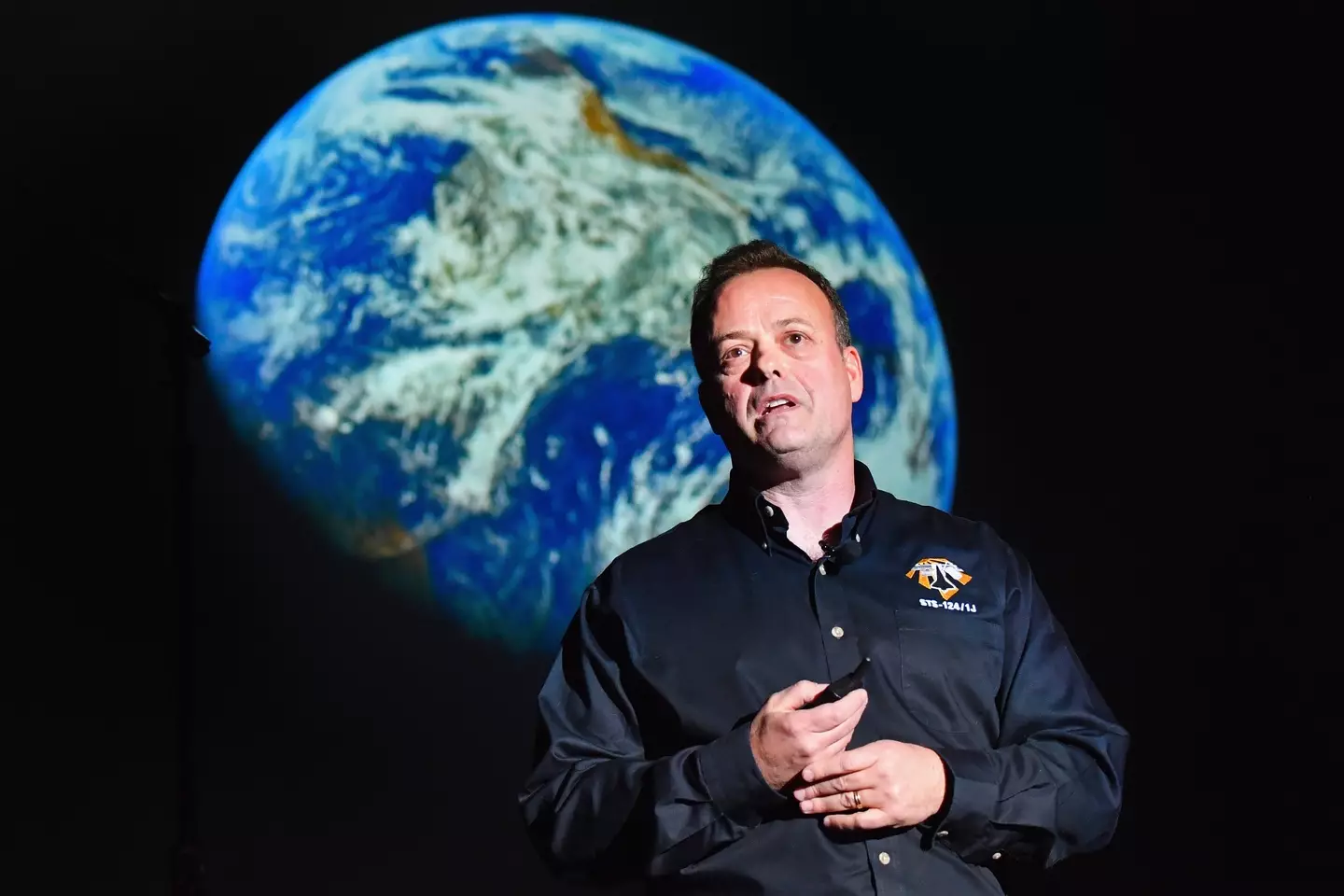
The 62-year-old returned to Earth with a new perspective after experiencing the ‘overview effect’ (Erika Goldring/Getty Images)
Since his feet have been back on solid ground, Garan has passionately championed looking after our planet while encouraging people to put each other before the rat race that is modern life.
“We’re not going to have peace on Earth until we recognise the basic fact of the interrelated structure of all reality,” Garan added – and he’s not the only one with this thought process either.
Astronaut Michael Collins who flew the Apollo 11 said he was stunned at how ‘fragile’ and ‘tiny’ Earth looked, while Apollo 14’s Edgar Mitchell said the experience gave him an ‘explosion of awareness’.
Featured Image Credit: ALEXANDER NEMENOV/AFP/Artur Plawgo/Getty Images
Topics: Space, News, Science, NASA, World News

Former NASA space cadet Ronald Garan didn’t just float around in space for 178 days to find out that the earth isn’t flat.
Rather, he experienced the ‘sobering realisation’ that us humans are all ‘living a lie’.
The 62-year-old had an uninterrupted view of planet earth and what he discovered was not on the cards.
Having flown 71 million miles in 2,842 orbits throughout his career at NASA, Ronald has surely felt the ‘overview effect’ more than once.
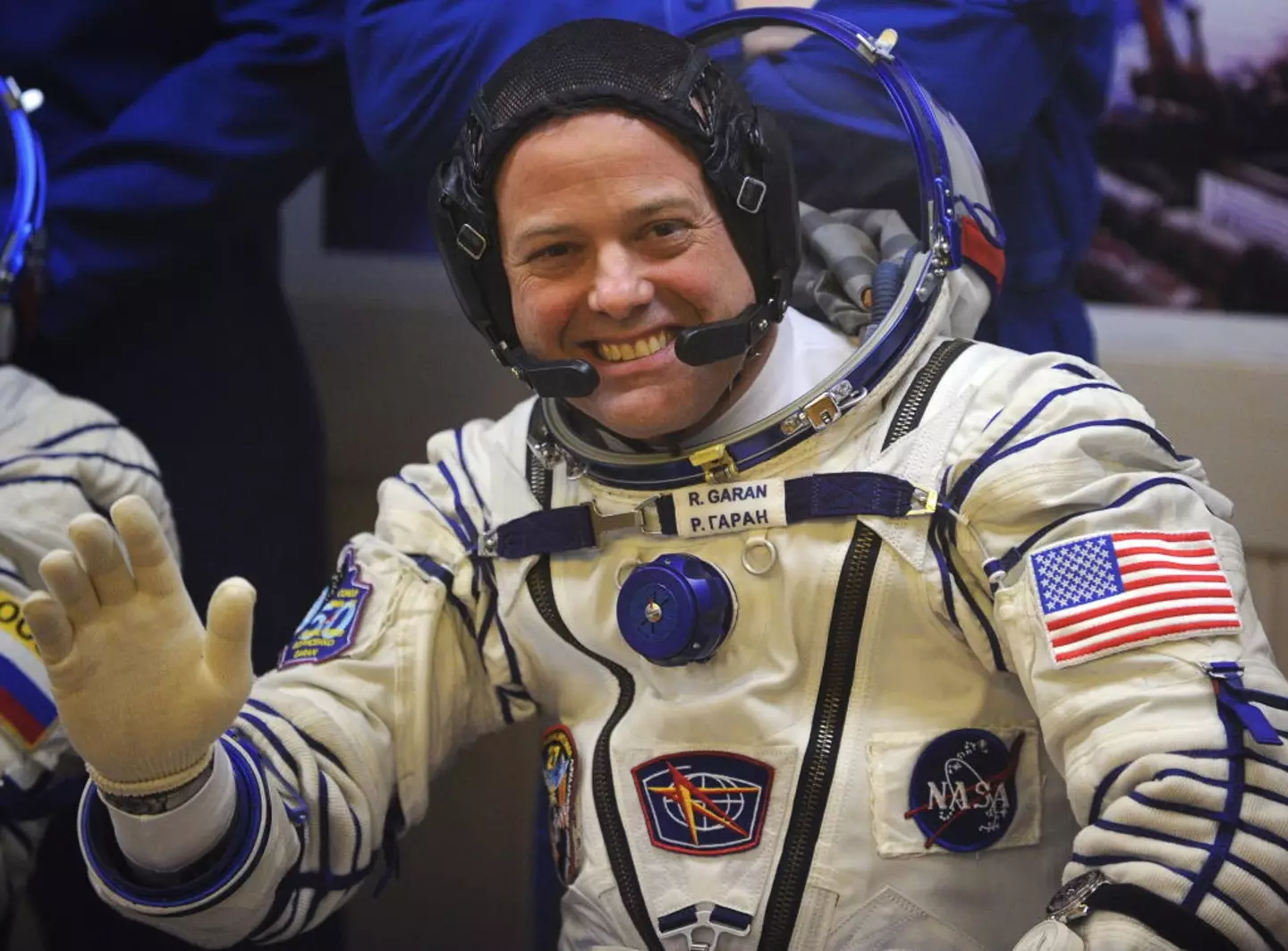
NASA astronaut Ron Garan had quite the awakening while up in space (ALEXANDER NEMENOV/AFP via Getty Images)
The term is coined by scientists as the feeling of ‘unexpected and overwhelming emotion’ astronauts get when taking a look at earth from space.
Now, when the former NASA astronaut was onboard the International Space Station, he spotted a long line of lights stretching across Asia.
He then realised it was a man-made structure of the border between India and Pakistan.
In a TED talk from 2016, he said: “Initially, I wrote this off as a strange reflection of moonlight on a river.
“I was very intrigued. It turns out that this was not a natural reflection at all.
“I’ve always said that you can’t see borders from space, apparently I was wrong.
“The earth, when viewed from space, almost always looks beautiful and peaceful.
“But was this an example of man made changed to the landscape that was clearly visible from space.”
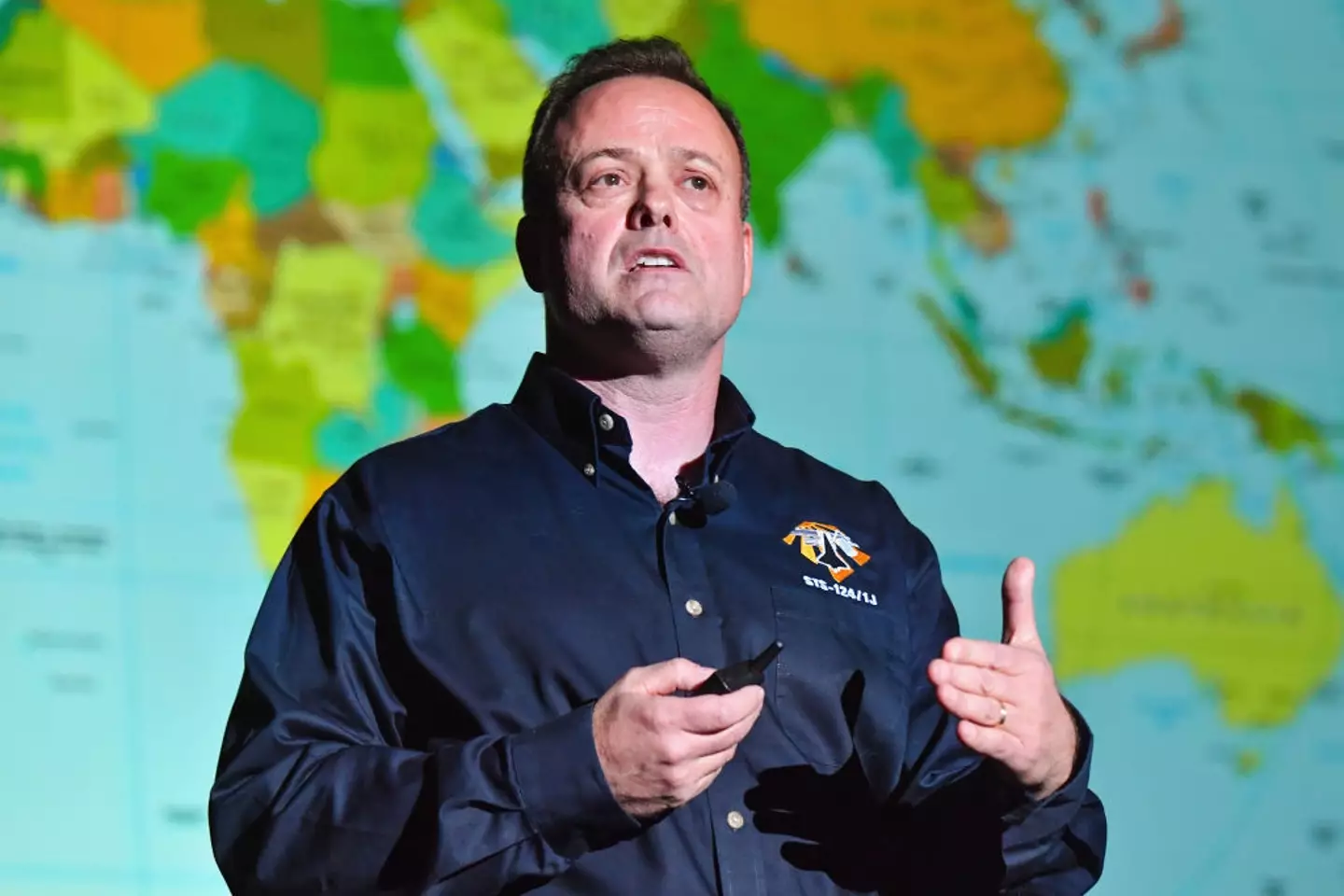
Ronald has flown 71 million miles in 2,842 orbits throughout his career at NASA. (Erika Goldring/Getty Images)
And in a 2022 interview with Big Think, Ronald opened up on why he thinks that humans are ‘living a lie’ and our general outlook on day-to-day life is backwards.
He explained: “When I looked out the window of the International Space Station, I saw the paparazzi-like flashes of lightning storms, I saw dancing curtains of auroras that seemed so close it was as if we could reach out and touch them.
“And I saw the unbelievable thinness of our planet’s atmosphere.
“In that moment, I was hit with the sobering realisation that that paper-thin layer keeps every living thing on our planet alive.
“I saw an iridescent biosphere teeming with life.
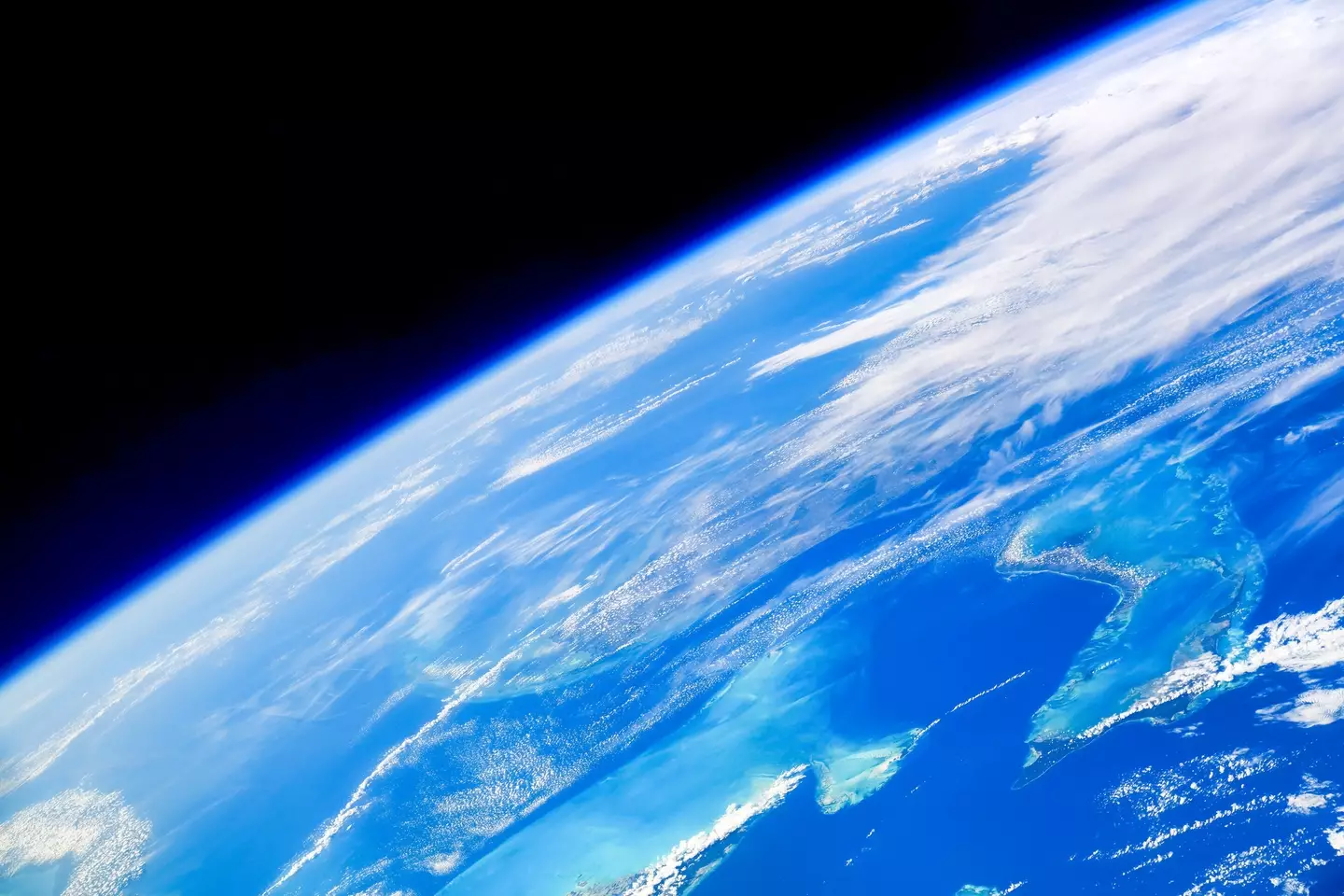
He admits that the earth looks ‘beautiful and peaceful’ from space. (Getty Stock Images)
“I didn’t see the economy. But since our human-made systems treat everything, including the very life-support systems of our planet, as the wholly owned subsidiary of the global economy, it’s obvious from the vantage point of space that we’re living a lie.”
He insisted we need to focus on more important issues like the climate crisis, instead of the economy.
“It’s obvious from the vantage point of space that we’re living a lie,” Garan added.
“We need to move from thinking economy, society, planet to planet, society, economy. That’s when we’re going to continue our evolutionary process.
“There’s this light bulb that pops up where they realise how interconnected and interdependent we all are.
“We’re not going to have peace on Earth until we recognise the basic fact of the interrelated structure of all reality.”
Featured Image Credit: Erika Goldring/Roberto Machado Noa/Getty Images
Topics: NASA, Space, Global Warming, Environment
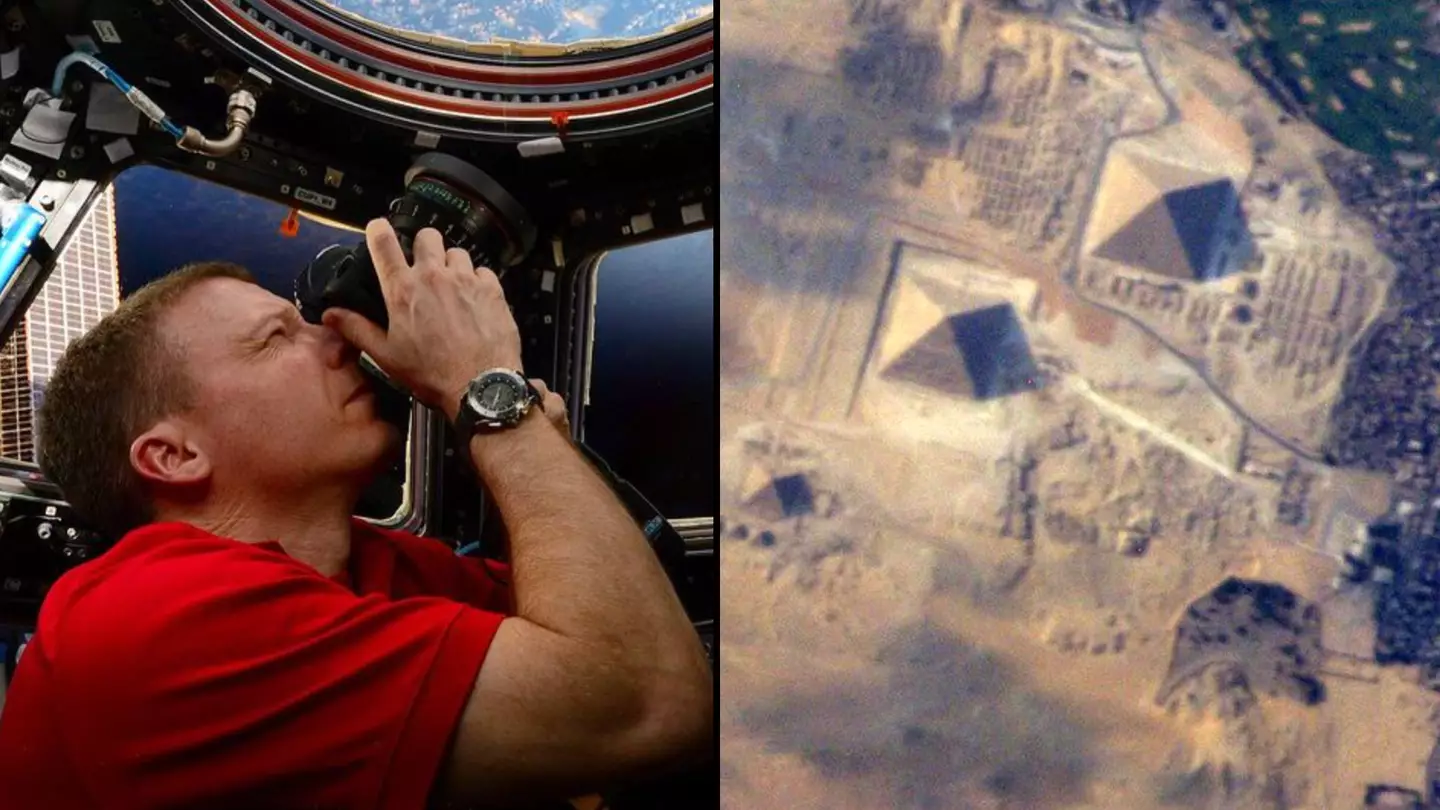
The idea of being up in space seems pretty cool in itself, getting to look out into, well, space or over Earth from above. Actually, I guess that could seem pretty scary.
For one astronaut, however, what made his experience even cooler is the once in a lifetime photo he managed to take.
NASA astronaut Terry W. Virts had been trying to capture one particular view for his six month mission when he was living and working on the International Space Station.
But it wasn’t until his ‘last day in space’ that he managed to get the specific shot.
While out there in 2015, he took various amazing photos like views from the station’s Cupola – a seven windowed-observation deck.
Another pretty magical snap showed a partially lit Earth with the sun shining overhead quite majestically as the space station’s robotic arms are visible around the sides.
You’d be forgiven for thinking it’s something out of a sci-fi film, but it was simply just Virts’ last picture of the mission.
The photo the NASA astronaut spent so long hoping for though was of one of the Seven Wonders of the Ancient World.
Virts managed to snap a super sharp view of the Great Pyramids of Giza in Egypt while looking out from the stations’ windows.
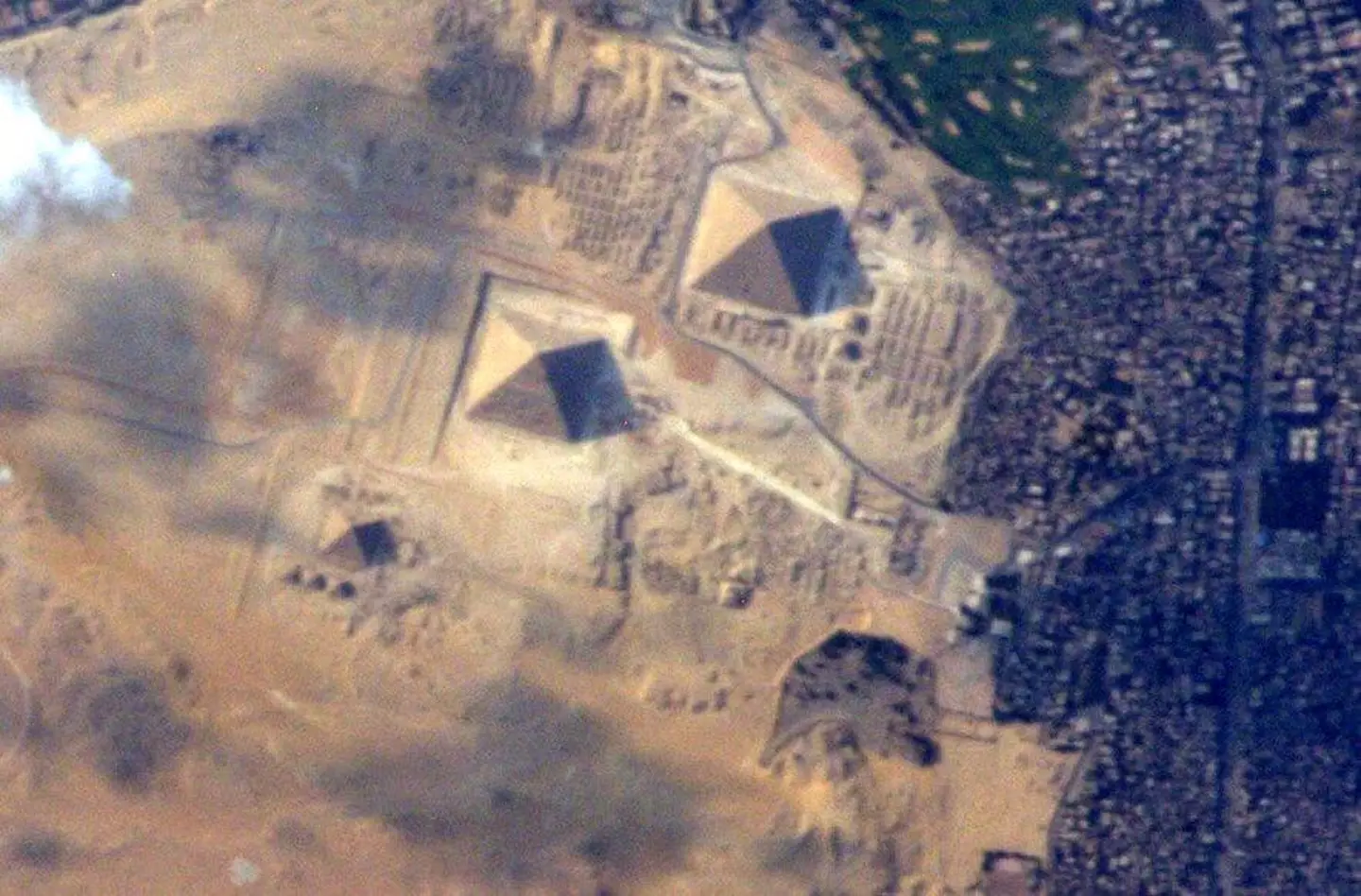
X / @AstroTerry
He shared the impressive photo – which again looks like something from a film – to X where he wrote: “It took me until my last day in space to get a good picture of these!”
Users called the snap ‘too cool’ and praised it as ‘pretty spectacular’.
One wrote: “This is what you call timing.”
As another put: “But what a picture it is! WOAW!”
READ MORE:
DOOMED SATELLITE CRASHING TOWARDS EARTH
HOW NASA WOULD WARN US IF THE WORLD WAS ABOUT TO END
And one joked: “I think I see Indiana Jones’ hat blowing around down there.”
The tips of the pyramids can be seen clearly in Virts’ photo, with the sharpness allowing us to see the massive structures from a bird’s eye view.
Well, an astronaut’s eye view.
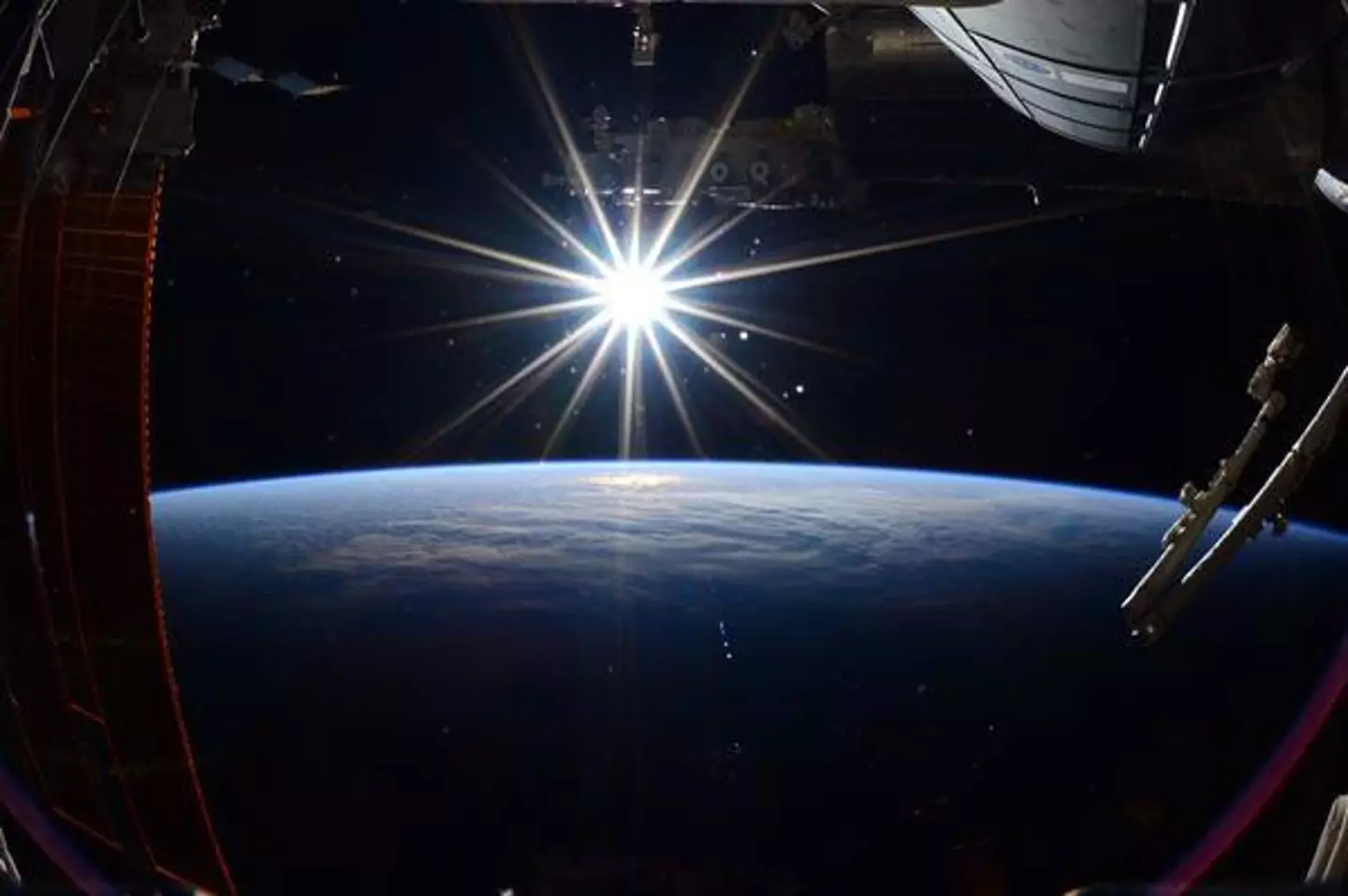
X / @AstroTerry
While on his mission, the NASA astronaut shared all kinds of photos and videos to social media.
One amazing photo showed the space station flying over Earth with an incredible bright green ribbon of aurora stretching across the planet.
Users on X wrote to Virts: “Thank you for super magnificent final shots!!!!!”
Another even put: “Honestly don’t know what to even say about these shots they so outrageously wondrous and spectacular.”
At the time of his venture back in 2015, plenty said: “Your images have been sensational.”
Those are views you certainly wouldn’t forget in a hurry.
Featured Image Credit: Instagram / @astro_terry / X / @AstroTerry
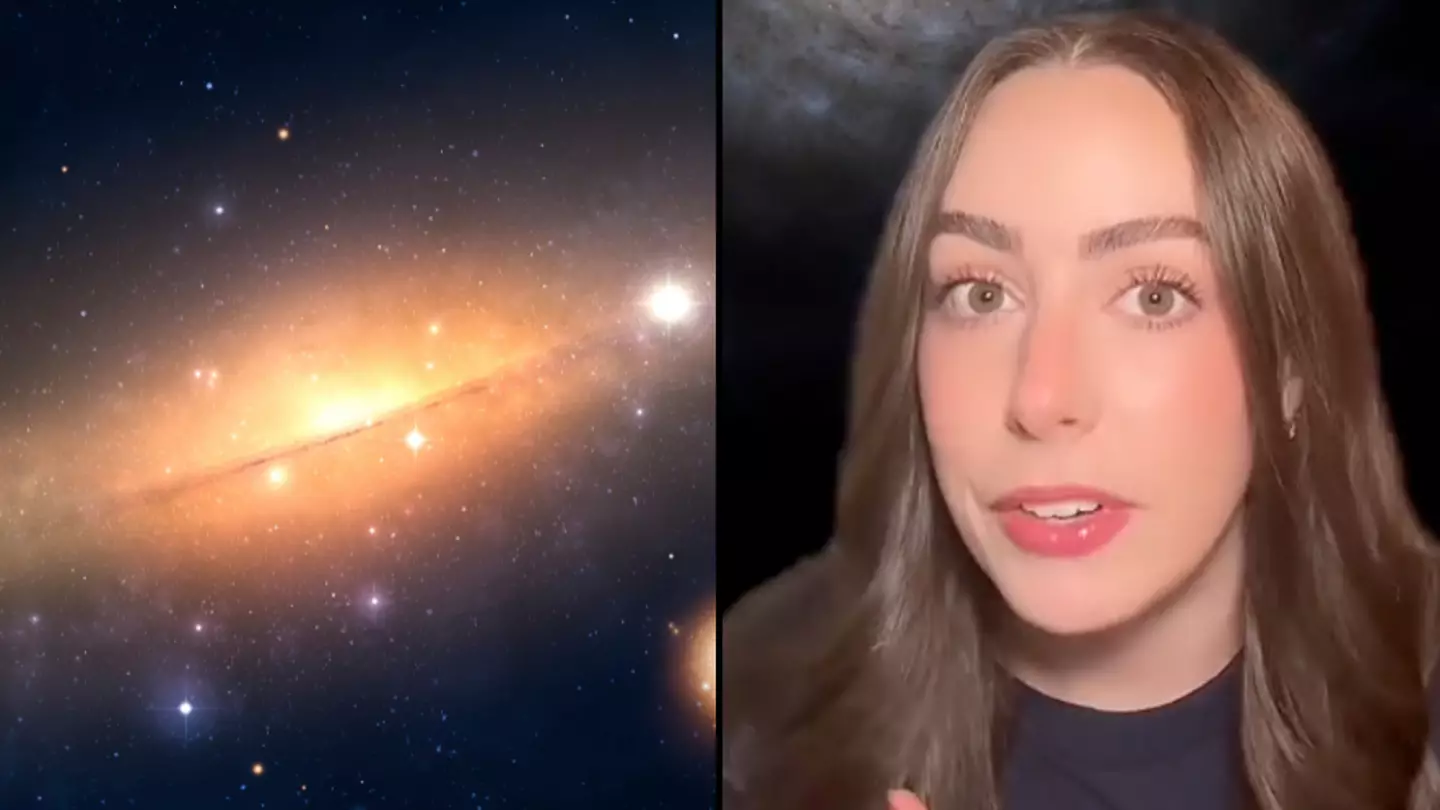
A content creator has revealed a massive ‘lie’ about the Milky Way that we’ve all likely thought was true our whole lives.
Space is mostly unknown to the human race, despite the huge strides we have made in the past few decades, most recently with discoveries from the James Webb Space Telescope.
However, there are some misconceptions about the gaping void around our blue planet, that people ought to know.
TikTok user @astro_alexandra has made a video explaining one of the big falsely believed ‘facts’ about our galaxy in particular.
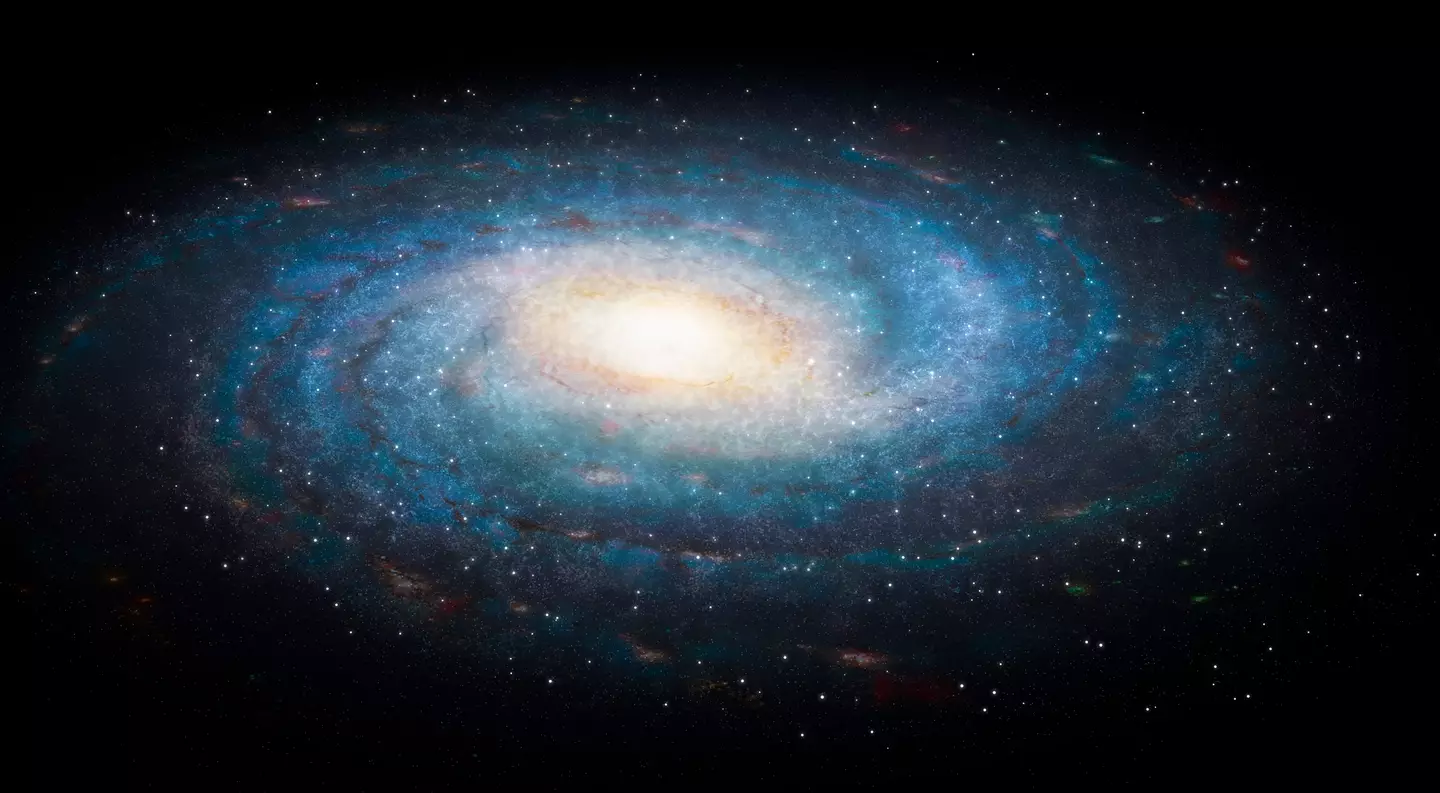
We always see photos like this of our galaxy and take them as fact. (Getty Stock Image)
Planet Earth is in a solar system, along with the other seven planets (and Pluto too if you want to show it some love), that is bound by the Sun by gravity, however, we are just a part of a wider, more vast galaxy.
You may know this as the Milky Way, which is about 100,000 light-years across and as of September 2023, NASA estimates that there are over 3,200 stars with planets orbiting them in addition to our own Sun.
Basically, it’s very big.
Alexandra took to social media to explain a misconception about our galaxy to her two-and-a-half million followers and people have been left shocked.
She began the video by saying: “That’s not real,” while pointing at an image of our Milky Way galaxy.
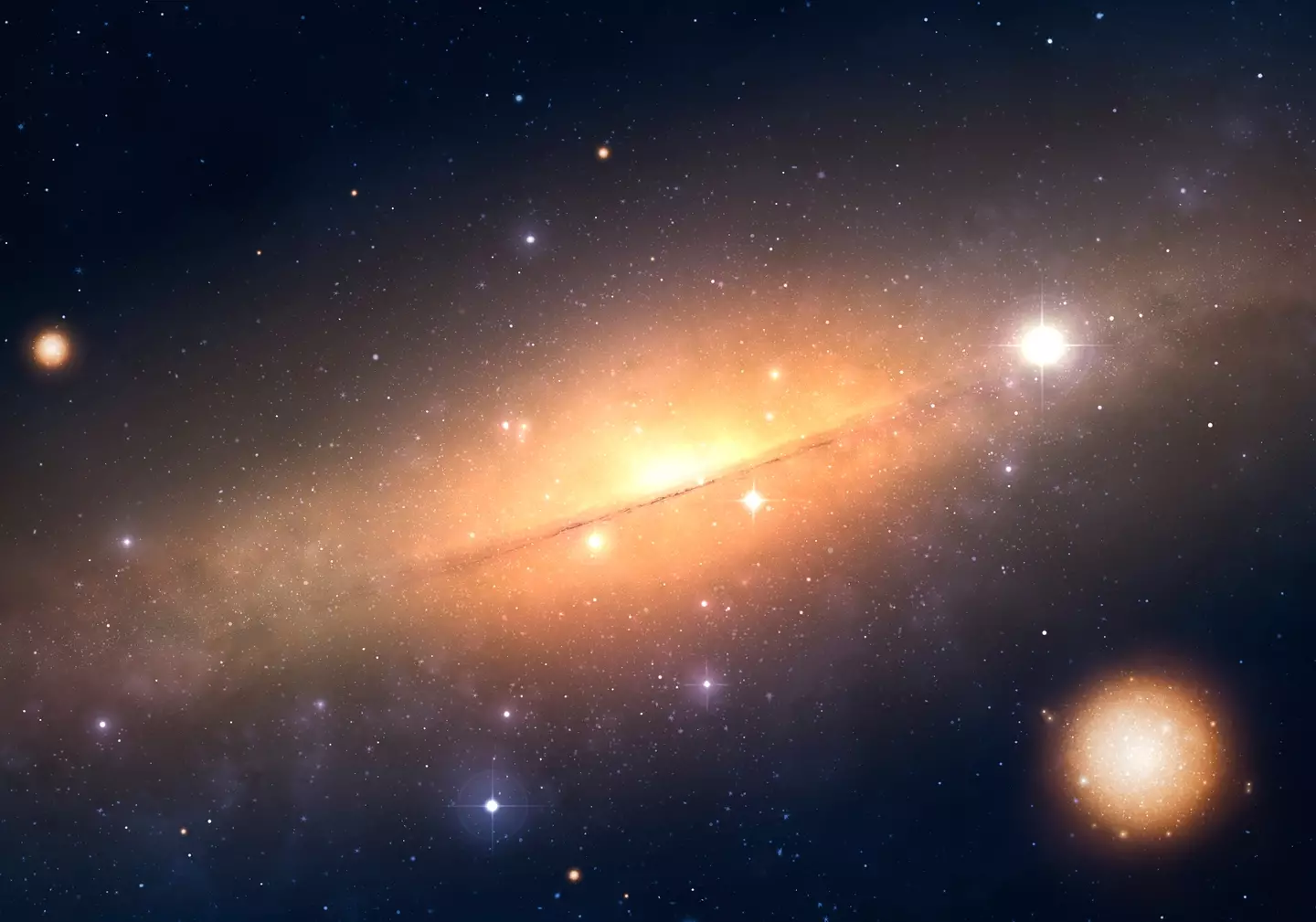
The Milky Way is about 100,000 light-years across. (Getty Images/Mark Garlick/Science Photo Library)
Alexandra continued: “There isn’t a single full photo of the Milky Way, which is the galaxy we live in.
“Every full image you see of the Milky Way is an illustration.
“We cannot see the Milky Way like this and I don’t think humans ever will, to get this image, a spacecraft would have to travel either up or down from the disc of the Milky Way, and travel so incredibly far.”
Alexandra revealed that the farthest a spacecraft has travelled isn’t even to our next closest star, but also explained that these illustrations aren’t exactly false either.
“This is what the Milky Way looks like,” Alexandra said.
“And we know that based on what we can see from Earth, we can see how big it is and where the centre is.”
The social media personality explained that we know that the galaxy is quite flat from looking at the stars, and that it’s a disc shape with different coloured stars.
She went on: “It’s basically like sitting in a seat of a Ferris wheel and trying to draw the rest of the Ferris wheel.
“If you’re sitting over here, you might miss something over here.
“But in general, you’re gonna get it pretty right. So this is pretty accurate. It’s just not real.”
According to NASA, ‘astronomers measure the amount of dust in the Milky Way and the dominant colours of the light we see, and they match those we find in other typical spiral galaxies’.
And because of this, we’re able to generate an image of the galaxy ‘even though we can’t get outside to see the whole thing’.
Well, my whole life is a lie.




